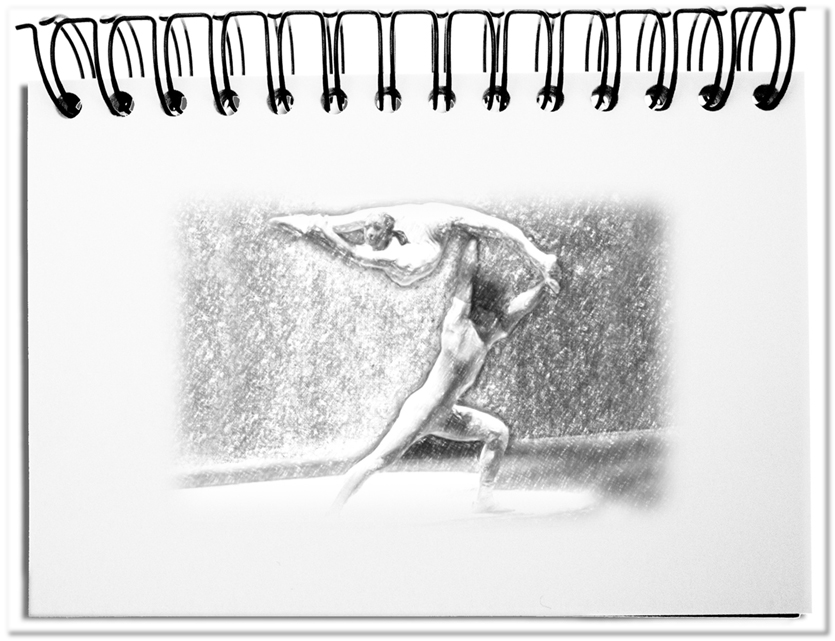The fitness of a company’s contributors is a prerequisite to adapt more easily to the market requirements and to take advantage of the new technical possibilities. At any age there are these, who are agile, and those, who are not. The result is that not everyone can bend in the same way. At the same time, everybody should be entrepreneur in the enterprise, what needs preparation. This depends on the one hand on the readiness and ability of the employees and on the other hand on the leadership styles. As long as everyone has intrinsic motivation and insight into the necessity, the needed fitness could be acquired. However, this is only possible, if the management team is prepared to let go. Entrepreneurship needs sufficient freedom to develop. With the right conditions you can start to agilize. The obstacles along the way are easier to recognize in the observable business areas than the attitudes and capabilities hidden in individuals. For this reason we take a closer look at nagil (n-ot agile).
Nagile companies impede themselves with a culture that does not allow agile approaches. The following hurdles can be identified – and removed, if one takes it seriously.
- Tight information filters
The facts and figures that are available everywhere as statistics, reports and white papers are no longer in keeping with the times of the old saying “Knowledge is power”. If management prevents transparency by filtering facts and figures, agility is made impossible through power games. In an agile environment, employees as a whole know more than their bosses. Knowledge processing is time-consuming, costly and becomes more powerful, when it is spread across several shoulders. That doesn’t apply to competition-critical content, of course – what Steve Jobs experienced firsthand, when Bill Gates took up his idea of a graphical user interface and brought it earlier to the public.
The prerequisite for agility is the open, mutual discourse. - Disproportionate hierarchy levels
The number of levels has always burdened the flexible interaction – regardless of the size of the company. The Dunbar number has shown that groups with more than 150 – 250 members tend to be bureaucratic and are only indirectly controllable. At the same time, the rule of thumb arose that the ideal Span of control is four to ten. For future, agile organizations this discussion should no longer be conducted, since many interconnected, small units (with up to nine members) generate added value for the customer in a self-organized way.
The prerequisite for agility is the transformation of the pyramid into a podular structure – the business in the business. - Remote-controlled decisions
In the line organization, decisions take place at the top and the implementation at the base of the pyramid. If task, authority and responsibility (TAR) are not in one hand, then the employees act without sufficient right and duteousness, the management team cannot bring its powers to bear and the team leaders suffer the fate of being liable without the ability to act or having any authority. The effects on self-esteem are clear – from the hubris of the leaders to the fatalism of the team leaders to the thwarted doers.
A prerequisite for agility is the bundling of TAR under one roof at the place of action. - Delayed action
Additionally, distributed TAR leads to a too long delay due to the remote-controlled decisions. As soon as an action is required, the employees have to obtain permission across several levels in order to be allowed to act. And this even though they know best what is needed, yet they are not allowed to decide. Especially disturbing is the demotivating effect of postponed decisions. Not enough to make them aware their powerlessness, the customers also unload their displeasure on them.
The prerequisite for agility is the comprehensive empowerment of employees for entrepreneurship – including budget and result responsibility as well as decision freedom. - Extrinsic distress
Despite many training courses, managers are often unable to get out of their micro-management. The situation is aggravated by a lack of social competency, which appears in personal criticism and a lack of appreciation. This creates negative stress for the employees, the so-called distress. It is difficult to fight this harmful burden on its own. This leads to today’s disease symptoms, such as high blood pressure, tachycardia and burn-out. In Japan there is even a special term for drastic consequences: Karoshi (Japanese: 過労死, Overwork death).
The prerequisite for agility are empathic, supportive and assisting mentors (AKA: Bosses). - Individual high performers
Finding individual top performers in the company, who are presented as examples to spur on the rest, shows that the focus is not on the team, but on competition between the employees. This leads to a battle situation and ultimately to a loss of friction. However, the complexity of today’s tasks requires so many skills that it is very unlikely to be found in one person. The whole is more than the sum of its parts. The (agile) team is the unit that masters complexity and creates viable solutions.
The prerequisite for agility is consistent team orientation and promotion.
Bottom line: Looking at nagile aspects of your business with the help of the previous aspects is a quick way to determine your readiness for agility. Nagile companies cannot remove the active information filters, the many hierarchical levels, the remote decision making, the delayed action, the executive-induced extrinsic distress and the lonely heroes of work. The path to more agility is only possible, when these nagile factors are resolved. The employees win in this process. The leaders are shaken in their self-esteem and need a new Raison d’être. Everything begins with the search for nagile clues.

